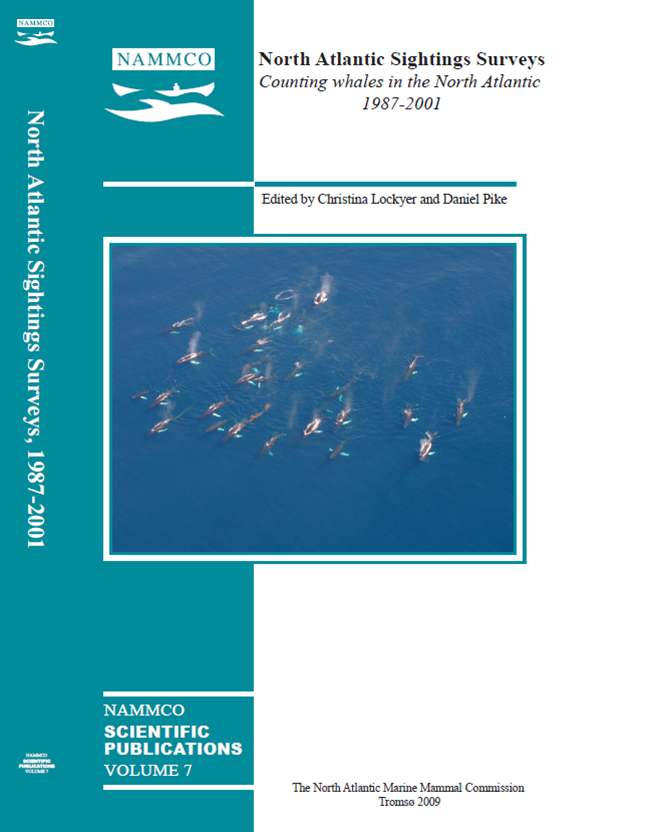Minke whale abundance estimation from the NASS 1987 and 2001 aerial cue–counting surveys taking appropriate account of distance estimation errors
DOI:
https://doi.org/10.7557/3.2708Keywords:
minke whales, Balaenoptera physalus, surveys, abundance,Abstract
We estimate the abundance of minke whales (Balaenoptera acutorostrata) from the Icelandic coastal shelf aerial surveys carried out as part of the 1987 and 2001 North Atlantic Sightings Surveys (NASS). In the case of the 1987 survey, the probability of detecting animals at distance zero (g(0)) is very close to 1 but there is substantial random measurement error in estimating distances. To estimate abundance from these data, we use methods which assume g(0)=1 but which includea distance measurement error model. In the case of the 2001 survey, measurement errors were sufficiently small to be negligible, and we use double platform methods which estimate g(0) and assume no measurement error to estimate abundance. From the 1987 survey, we estimate abundance to be 24,532 animals, with 95% CI (13,399; 44,916). From the 2001 NASS survey data, minke whale abundance is estimated to be 43,633 animals, with 95% CI (30,148; 63,149).Downloads
Published
2009-09-01
How to Cite
Borchers, D. L., Pike, D. G., Gunnlaugsson, T., & Víkingsson, G. A. (2009). Minke whale abundance estimation from the NASS 1987 and 2001 aerial cue–counting surveys taking appropriate account of distance estimation errors. NAMMCO Scientific Publications, 7, 95–110. https://doi.org/10.7557/3.2708
Issue
Section
Articles





